I am trying to use OpenCV's (Hough)Circle detection to.. detect circles. I created a solid circle on a black background, tried to play with the parameters, used blur and everything, but I am just not able to make it find anything.
Any ideas, suggestions etc. would be great, thank you!
my current code is something like this:
import cv2
import numpy as np
"""
params = dict(dp=1,
minDist=1,
circles=None,
param1=300,
param2=290,
minRadius=1,
maxRadius=100)
"""
img = np.ones((200,250,3), dtype=np.uint8)
for i in range(50, 80, 1):
for j in range(40, 70, 1):
img[i][j]*=200
cv2.circle(img, (120,120), 20, (100,200,80), -1)
gray = cv2.cvtColor(img, cv2.COLOR_BGR2GRAY)
canny = cv2.Canny(gray, 200, 300)
cv2.imshow('shjkgdh', canny)
gray = cv2.medianBlur(gray, 5)
circles = cv2.HoughCircles(gray, cv2.cv.CV_HOUGH_GRADIENT, 1, 20,
param1=100,
param2=30,
minRadius=0,
maxRadius=0)
print circles
circles = np.uint16(np.around(circles))
for i in circles[0,:]:
cv2.circle(img,(i[0],i[1]),i[2],(0,255,0),2)
cv2.circle(img,(i[0],i[1]),2,(0,0,255),3)
cv2.imshow('circles', img)
k = cv2.waitKey(0)
if k == 27:
cv2.destroyAllWindows()



